Exploring Budapest’s communist past offers a unique window into a complex and often oppressive era. Visitors can explore this history through the immersive experiences at the House of Terror or the open-air exhibition of Statue Park. These sites provide a thought-provoking glimpse into the daily lives and struggles of Hungarians under the weight of totalitarian regimes. Whether one chooses to confront the haunting realities of the past or reflect on the enduring symbols of a bygone era, the insights gained from these encounters can leave a lasting impression on those seeking to understand the profound impact of communism on this city and its people.
Key Points
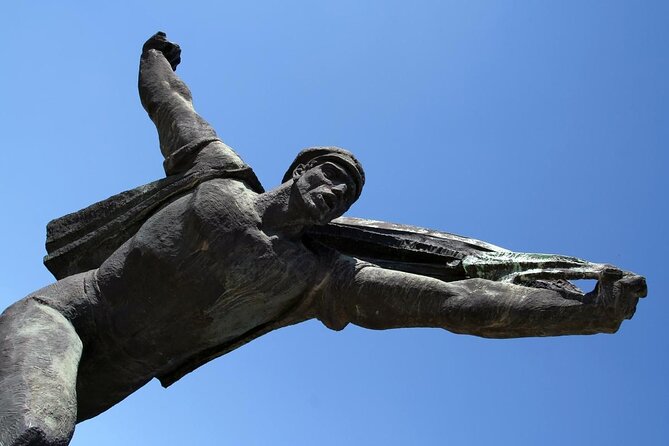
- The tour provides an immersive exploration of life behind the Iron Curtain in Budapest, led by local experts with firsthand accounts of the communist era.
- Visitors can experience the communist-era culture and history by visiting the Bambi Presszó café, a stronghold of communist culture, and exploring visible communist relics throughout the city.
- The tour includes informative handouts, complimentary coffee or soft drink, and optional visits to communist-era landmarks like the House of Terror or Statue Park.
- The flexible itinerary allows for personalized exploration, with adjustments based on group interests, and includes a moderate level of physical activity.
- Traveler feedback highlights the tour’s strengths, such as knowledgeable guides and engaging content, as well as areas for improvement in logistical organization and pricing.
Tour Overview
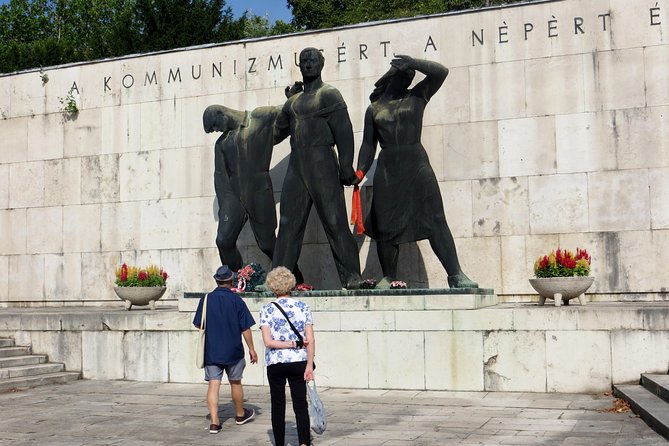
The tour promises an immersive exploration of life behind the Iron Curtain, guiding visitors through the vibrant streets of Budapest.
Led by a local expert, the 3-hour experience offers firsthand accounts of the communist era’s black-market economy and Soviet influence.
Visitors will start at the Bambi Presszó café, a last stronghold of communist culture, before embarking on a walking tour that showcases the communist relics still visible in the city today.
Along the way, informative handouts, a complimentary coffee or soft drink, and insights from the knowledgeable guide provide a well-rounded understanding of this significant historical period.
The flexible itinerary allows for adjustments based on the group’s interests, ensuring an engaging and personalized exploration of life under communism.
You can also read our reviews of more tours and experiences in Budapest.
Tour Inclusions
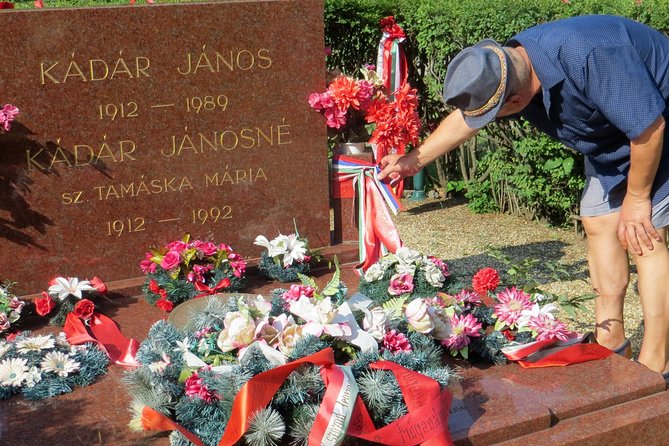
Informative handouts, a complimentary coffee or soft drink, and a knowledgeable local guide comprise the core inclusions of this immersive tour, providing visitors with a well-rounded understanding of life under communism.
The tour also includes entrance tickets for optional visits, allowing guests to explore communist-era relics and landmarks firsthand.
While additional food, drink, hotel transfers, and gratuities are available at an extra cost, the tour’s focused inclusions ensure a streamlined and enriching experience.
Flexibility is also a key feature, with the ability to adjust the itinerary based on guest preferences.
Meeting and Pickup
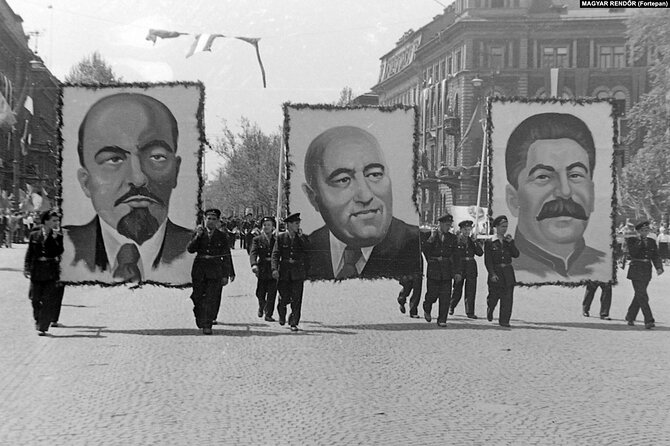
Guests can either start the tour from a selected meeting point or request hotel pickup, allowing for convenient and personalized access. The tour then ends back at the original meeting location, providing a seamless experience. Flexible itinerary adjustments are available upon request, enabling the tour to be tailored to individual preferences.
The meeting point is easily accessible, with the tour guide ready to welcome guests and share insights into life under communism. Whether starting from a central location or having the guide meet them at their hotel, participants can look forward to an engaging and informative exploration of Budapest’s communist past.
The flexible nature of the tour ensures an enjoyable and customized experience for all.
Tour Accessibility and Requirements
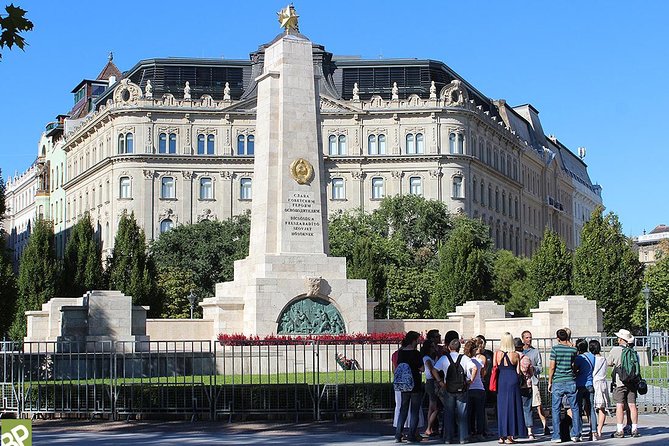
Confirmation of the tour booking is received at the time of reservation, allowing participants to plan their visit with confidence.
Children must be accompanied by an adult as the tour isn’t wheelchair accessible, though service animals are permitted. Located near public transportation, the moderate physical fitness level required ensures the tour remains inclusive for a wide range of guests.
The private nature of the tour allows for flexibility, with the itinerary tailored to the group’s interests.
While the tour may not be suitable for those with limited mobility, the knowledgeable guide and immersive experience offer an engaging and informative look into life under communism in Budapest.
Travelers are encouraged to review the accessibility details and prepare accordingly to make the most of this unique opportunity.
Traveler Feedback
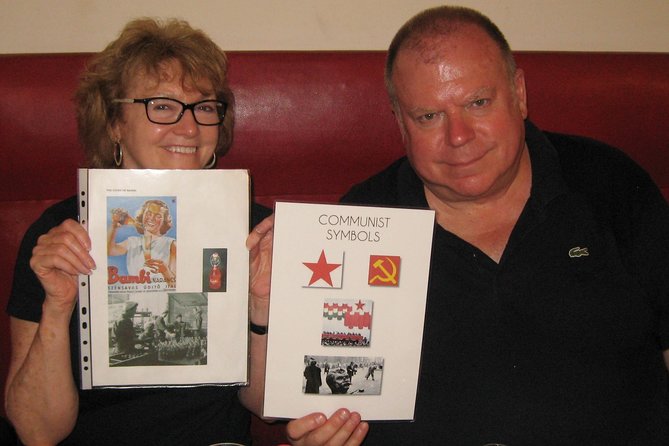
Reviews from past participants provide valuable insights into the tour’s strengths and areas for improvement. The experience has garnered a solid 4.5-star rating from 18 reviews, with positive feedback highlighting the knowledgeable guides and engaging content.
However, some negative comments suggest issues with tour execution, guide effectiveness, and pricing concerns, underscoring the importance of clear communication and setting appropriate expectations.
Travelers have praised the tour’s ability to offer a firsthand glimpse into life behind the Iron Curtain, appreciating the guides’ personal accounts and the opportunity to explore communist relics in the city.
At the same time, a few reviewers noted logistical challenges and felt the tour could have been better organized. The feedback indicates a mix of satisfaction and areas for improvement, emphasizing the need for a seamless and enriching experience.
- Budapest Danube Cruise With Buffet Dinner, Performances and Music
- Half-Day Wine Tasting Tour in Etyek Wine Country Near Budapest
- Budapest Danube River Candlelit Dinner Cruise With Live Music
- Guided Tours in Budapest on Monsteroller E-Scooter
- Budapest All in One Walking Tour With Strudel Stop
- Welcome to Budapest Walking Tour
Communist Budapest Experience
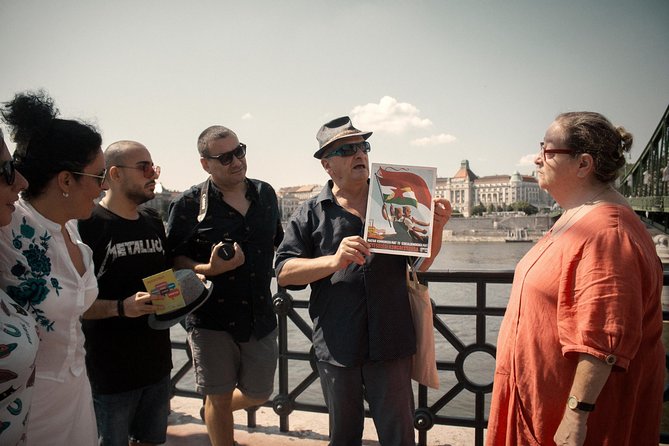
On the Communist Budapest tour, visitors embark on an immersive exploration of the city’s Soviet-era legacy, led by local experts who share firsthand accounts of life behind the Iron Curtain. The experience begins with a cup of coffee at Bambi Presszó, a last stronghold of communist culture, setting the stage for the journey ahead. The walking tour showcases the city’s communist relics, from statues and buildings to hidden black-market remnants, providing a tangible glimpse into the past. Through this unique lens, travelers gain a deeper understanding of the hardships and resilience of Hungarians during the communist era.
| Highlights | Inclusions | Accessibility |
|---|---|---|
| – Learn about life under the Iron Curtain | – Informative handouts | – Confirmation upon booking |
| – See communist-era relics and landmarks | – Coffee or soft drink | – Not wheelchair accessible |
| – Hear firsthand accounts from local experts | – Entrance tickets available | – Near public transportation |
Bambi Pressző Café Visit
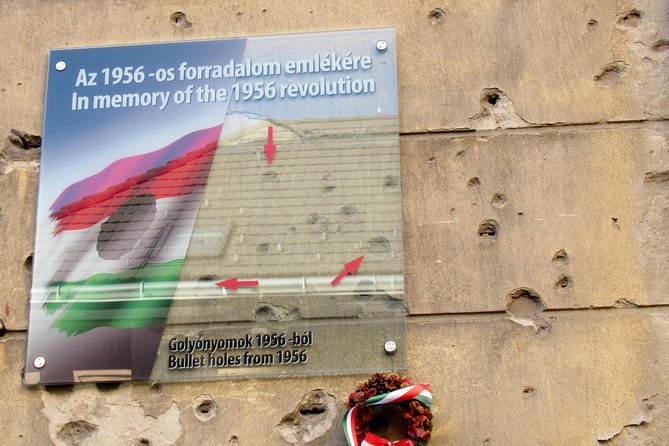
In an article titled ‘Life Under Communism With House of Terror or Statue Park Opt.’, the Bambi Presszú café visit is a highlight of the tour.
The tour begins at the Bambi Presszú café, a last stronghold of communist culture in Budapest, where visitors gather for a cup of coffee and an immersive introduction to the city’s Soviet-era past.
The café offers a glimpse into the black-market economy and everyday life under communist rule, with:
-
Vintage decor and furnishings that transport visitors back in time.
-
Waitstaff dressed in uniforms reminiscent of the former regime.
-
A menu featuring traditional Hungarian dishes and beverages popular during the communist era.
This engaging start sets the stage for the walking tour’s exploration of communist relics still visible in the city today.
Communist Relics in the City
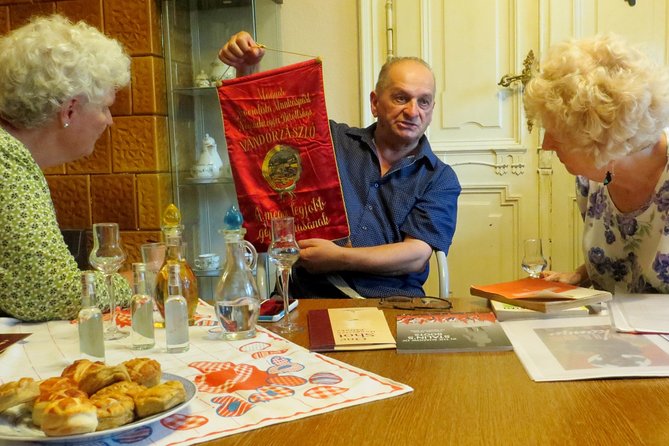
The walking tour showcases various communist relics that remain visible throughout the city, offering a tangible connection to Budapest’s Soviet-era past.
These relics, scattered across the urban landscape, serve as physical reminders of the communist regime’s influence and the daily lives of citizens during that period.
Visitors can see the imposing statues of communist leaders, once proudly displayed as symbols of power, now relegated to less prominent locations.
Crumbling buildings adorned with hammer and sickle motifs, once housing government offices and party headquarters, stand as vestiges of a bygone era.
The tour guides share insights into how these relics were integrated into the city’s fabric, providing a unique window into Hungary’s communist history.
Frequently Asked Questions
What Was the Role of the Secret Police in Communist Hungary?
The secret police in communist Hungary, known as the ÁVH, played a crucial role in enforcing the regime’s control. They conducted widespread surveillance, monitored citizens, and brutally suppressed any dissent or opposition to the communist government’s policies.
How Did the Black-Market Economy Function Under Communist Rule?
Under communist rule, the black market served as an informal economy where citizens could obtain scarce goods and services outside the rigid state-controlled system. It operated through under-the-table transactions, bartering, and connections to circumvent shortages and regulations.
What Were the Daily Struggles of Ordinary Citizens During This Period?
Under communist rule, ordinary citizens faced daily struggles such as shortages of consumer goods, long lines for basic necessities, limited access to information, and restricted freedoms, leading to widespread frustration and disillusionment with the system.
How Did the Communist Regime Censor and Control Information?
The communist regime tightly controlled information, censoring media and monitoring citizens. They restricted access to outside news sources, promoting state propaganda and limiting free speech. Citizens faced harsh consequences for accessing or sharing unapproved information under the authoritarian system.
What Were the Long-Term Impacts of Soviet Occupation on Hungarian Society?
The Soviet occupation had long-lasting effects on Hungarian society, deeply influencing its cultural, economic, and political landscape. Many Hungarians faced restricted freedoms, a weakened civil society, and a lingering sense of resentment towards the repressive communist regime.
Recap
Enjoy Budapest’s communist history by exploring the House of Terror or Statue Park.
Witness the oppressive realities faced by Hungarians under Nazi and Soviet regimes, or reflect on the monumental communist statues in Statue Park.
This tour offers a thought-provoking insight into the city’s past, leaving visitors with a deeper understanding of this pivotal chapter in Hungarian history.
More Tour Reviews in Budapest
- Rudas Bistro Premium Brunch
- Budapest Buda Side Tour: Conquer the Castle
- Private Budapest Sightseeing Tour: Royal Castle, Heroes Square, Chain Bridge
- Private Transfer From Budapest to Split, Hotel-To-Hotel, English-Speaking Driver
- 7 Days Balkan Tour to Historic Croatia and Bosnia Herzegovina
- Explore Budapest Customisable City Game for Groups
Not for you? Here's more things to do in Budapest we have recnetly reviewed
- 2 Best Canoe And Kayak Experiences In Budapest
- 4 Best Craft Beer Tours And Tastings In Budapest
- 8 Best Christmas Experiences In Budapest
- 24 Best Dining Experiences In Budapest
- 20 Best Full-Day Tours In Budapest
- Best 3 Day Tours In Budapest
- 3 Best 4 Day Tours In Budapest
- 20 Best Massage And Relaxation Services In Budapest
- 20 Best Photography Experiences In Budapest
- 13 Best Coffee Tours And Tastings In Budapest
- 23 Best Dinner Tours In Budapest
- 25 Best Cruises And Boat Tours In Budapest
